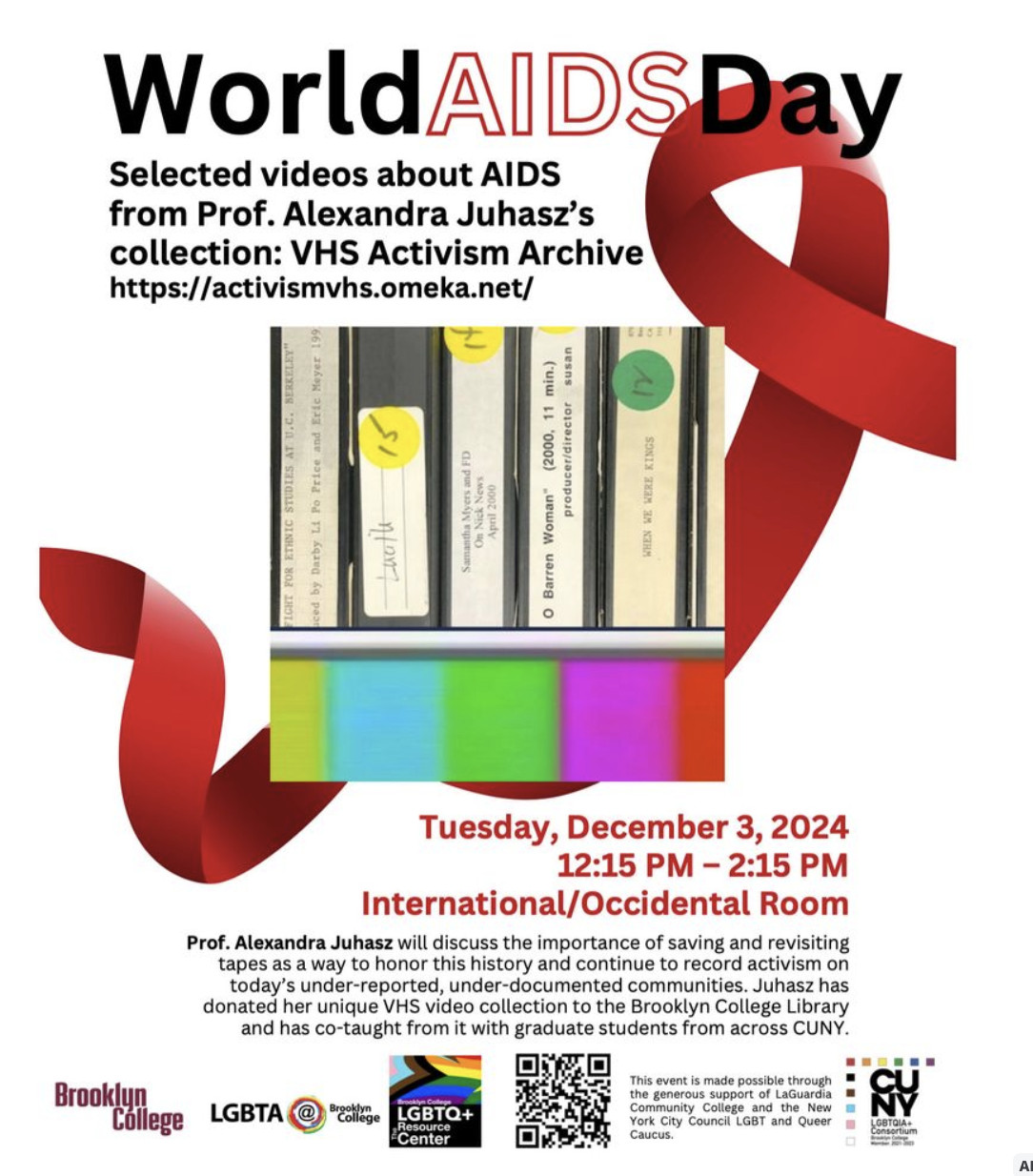
I had the pleasure this year, once again, of presenting AIDS media to commemorate Day With(out) Art at Brooklyn College, where I work. Sponsored by the LGBTQ+ Resource Center, the event is always well attended and defined by the diversity of its constituents. This year proved no exception.
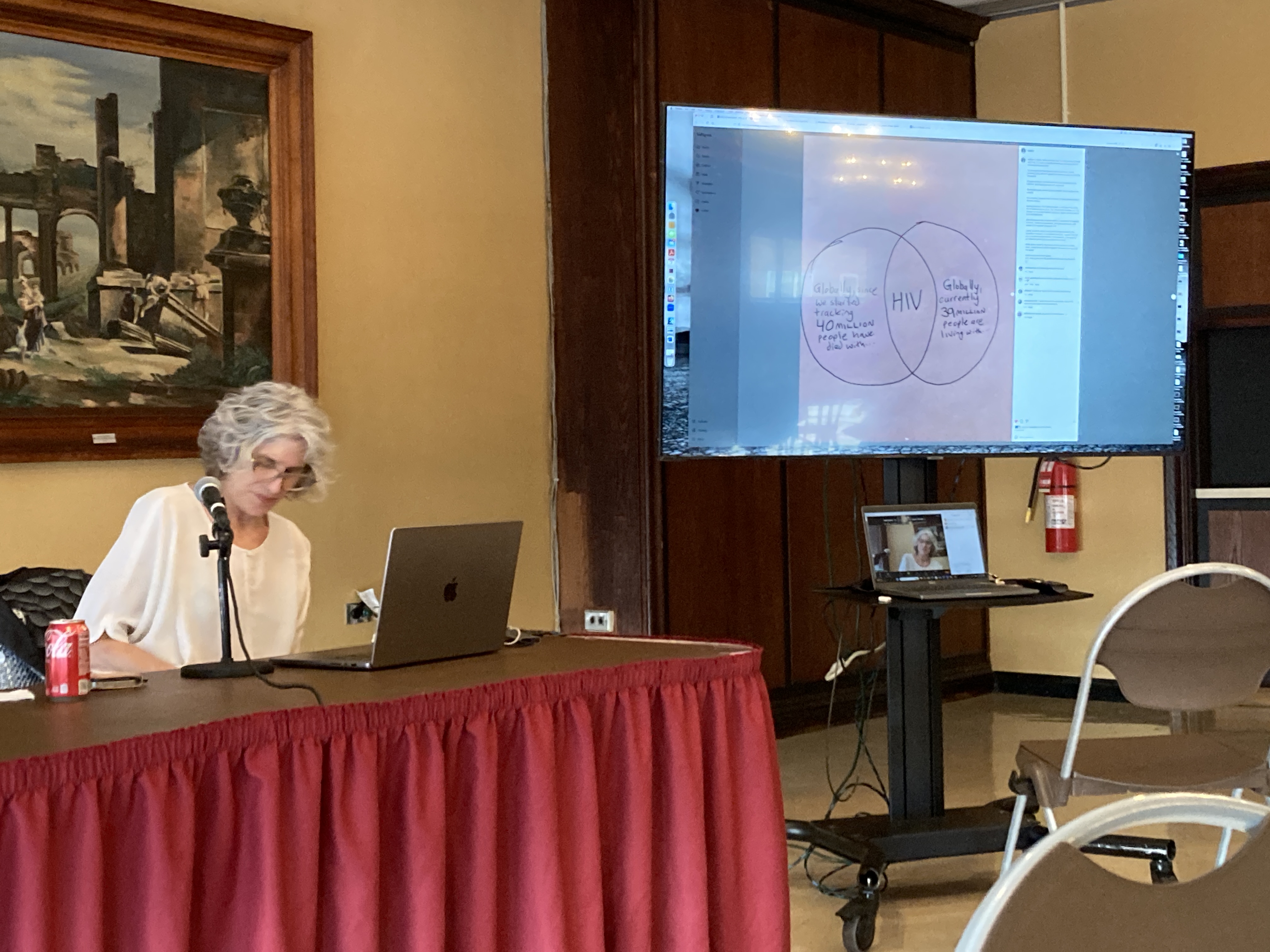
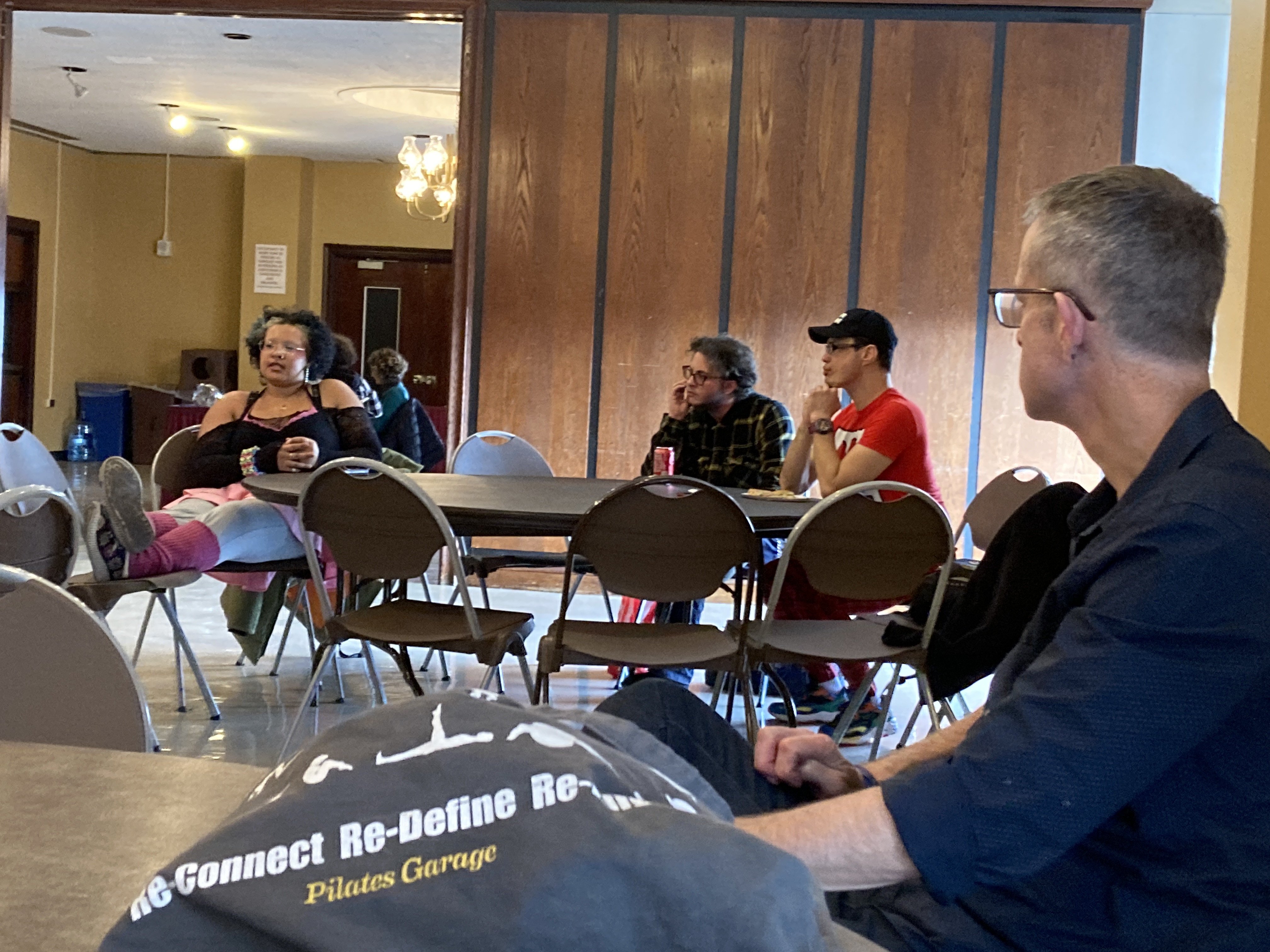
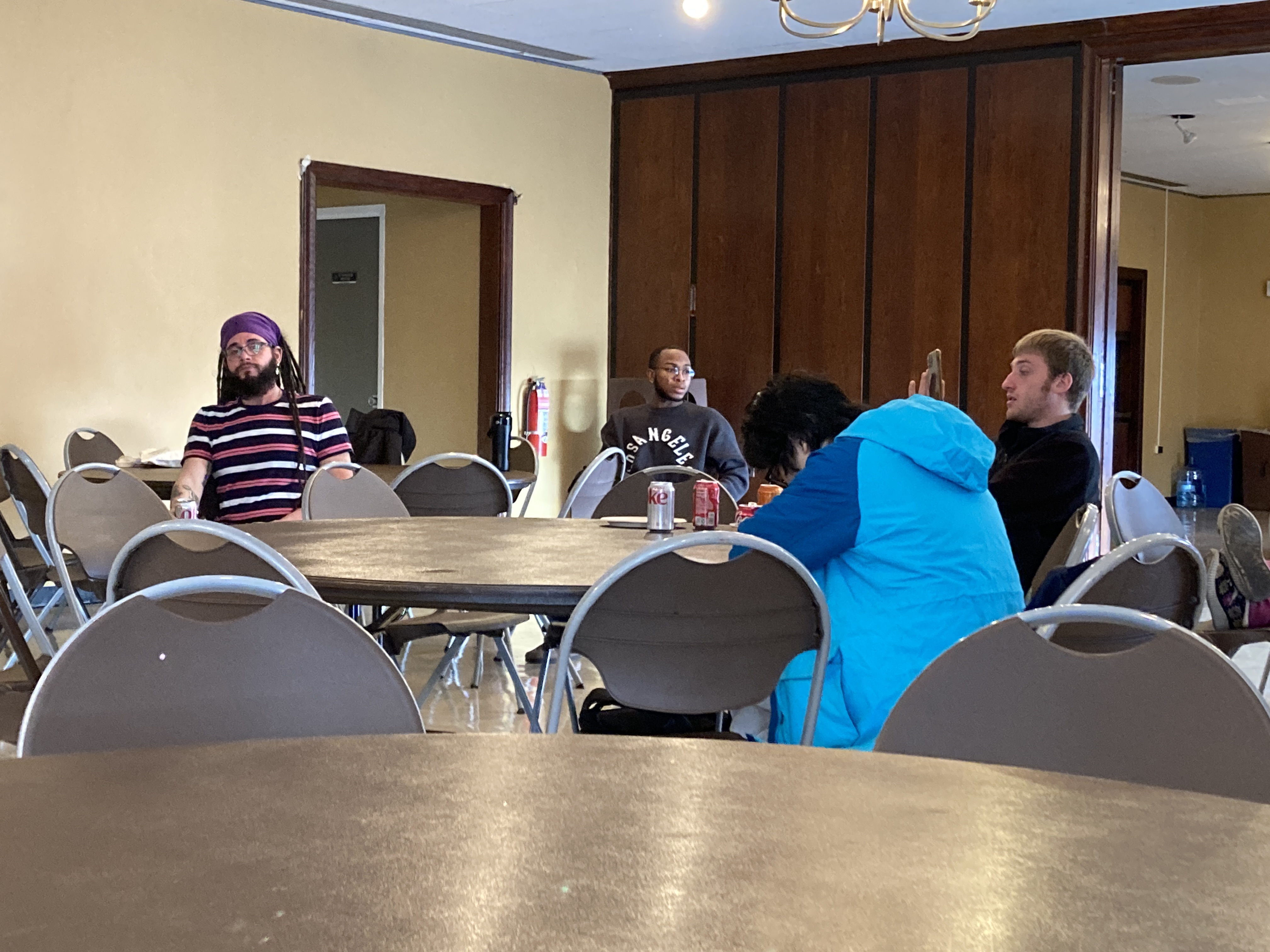
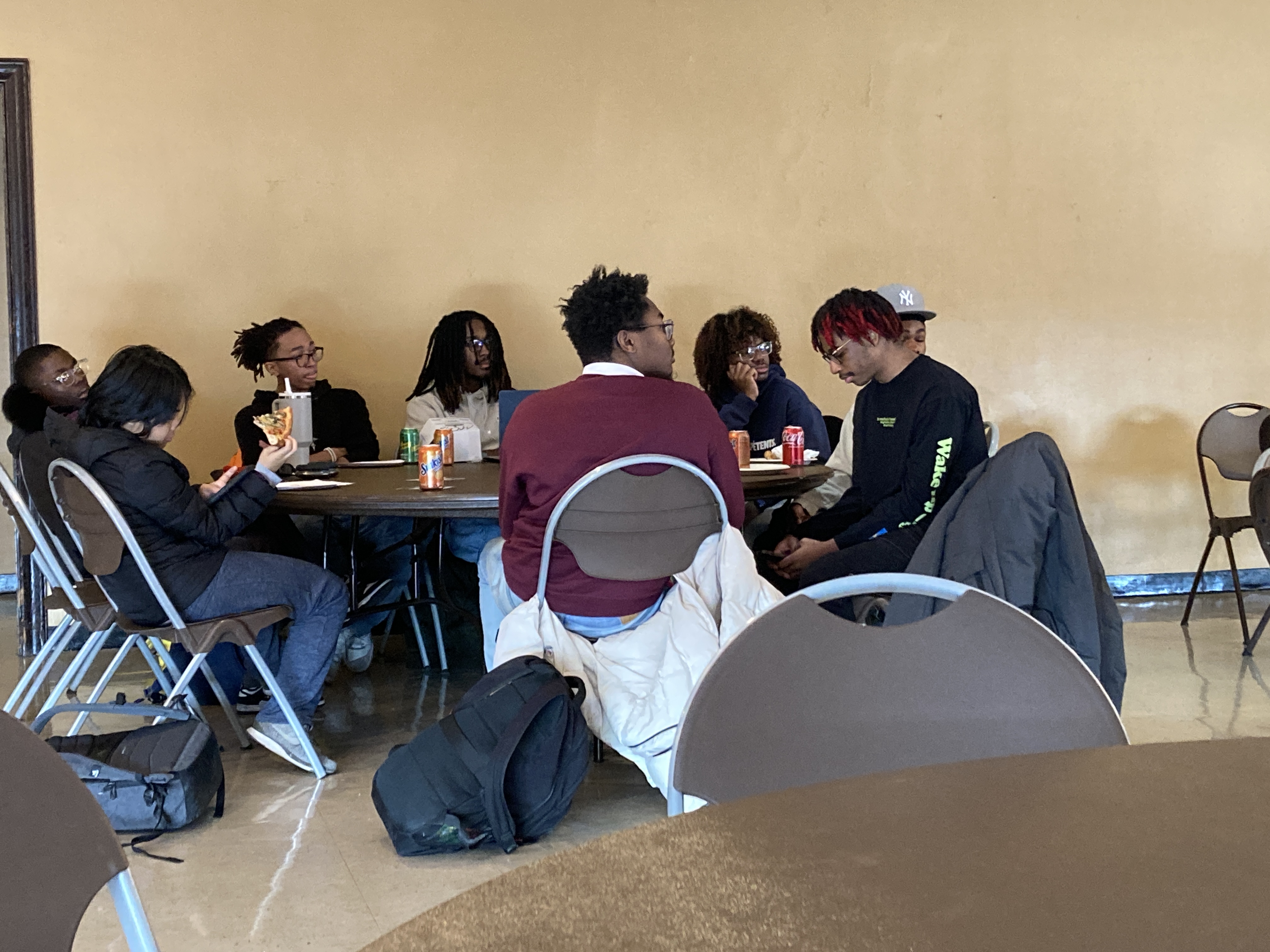
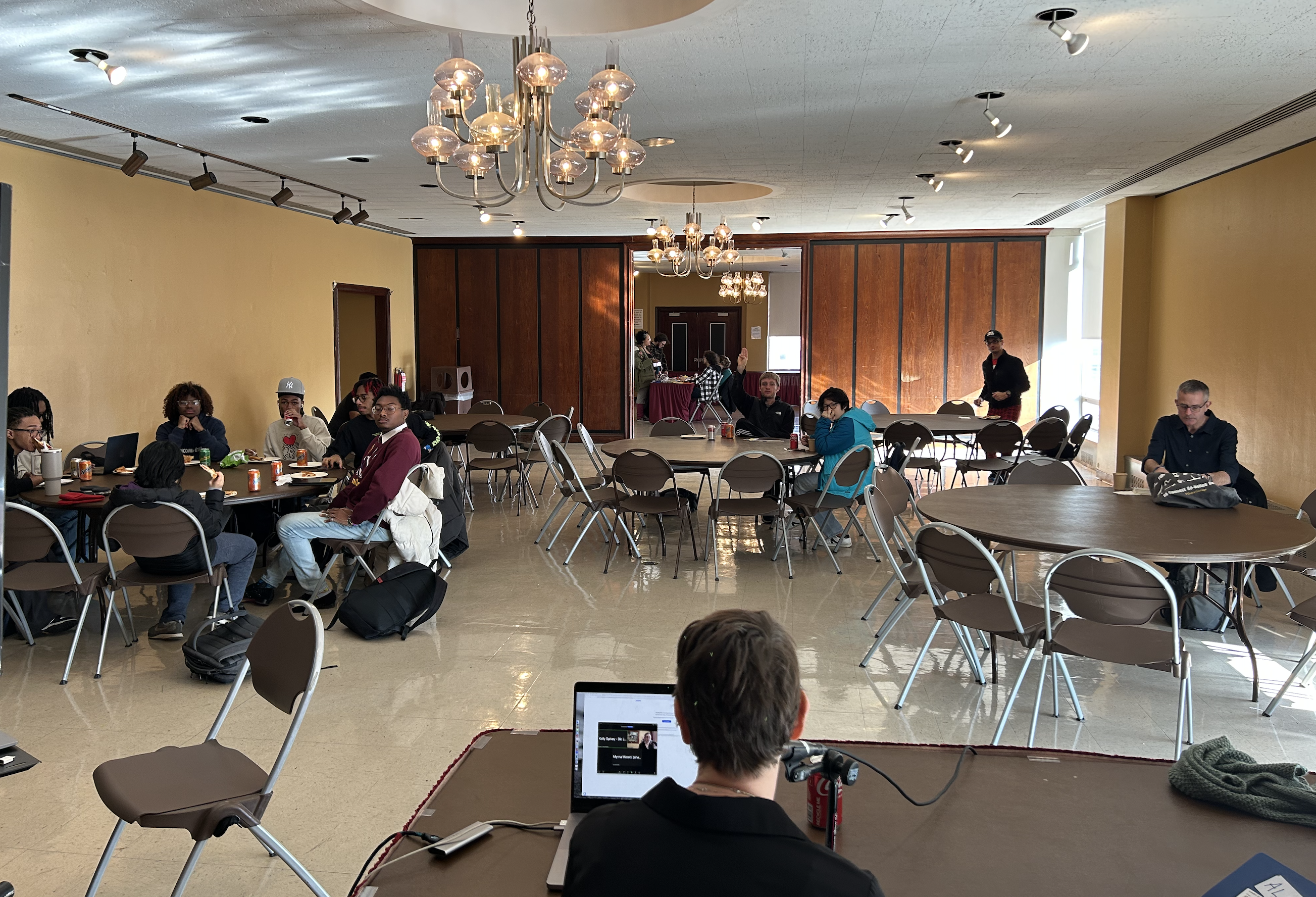
Over pizza and cokes, I began by going around the room to hear how the goals of Day With(out) Art were meaningful to each of the thirty or so people who attended. How did each one of us mourn, celebrate, remember, or engage in action around HIV/AIDS? Answers ranged from personal experiences of loss, to medically unfounded but very formative psychological worries about having sex with a husband who is HIV+ and undetectable, to compassion for a family member living with HIV who is all but shunned, and responses from several Black queer men who reflected they had little knowledge to share.
This encounter, no different from that of most student clubs, community meetings, support groups or feminist classrooms (online and off), can be instructive for this quest on my recently reactivated blog, to understand how to muster models to carry with us as the leadership of this country transitions in dangerous ways. It seems clear that my primarily working-class and poor students of color at CUNY, our work as educators at (public) institutions, and our commitments as organizers around LGBTQ+ health and safety may soon be threatened. How do we prepare in the interval? What can we learn from practices already in place?
While my following remarks about Worlds AIDS Day@BC may seem to be so common as to be self-evident, it is often the experiences that are most naturalized or humble that demand our closer attention. As I queried in the previous post, The Audience as Community: Visual AIDS, about a similar event (albeit attended by hundreds, at an internationally renowned museum and also worldwide, with participating artists in attendance), under what conditions, and promoting what functions, can an audience be a community? And, by association, how is being “in community,” in any number of diverse ways and conditions, something that assists our staying and fighting power?
Grounded in feminist and other traditions of radical pedagogy,1 a collection of attendees can become a community when various kinds of sharing organize an encounter framed by a facilitator keen on interaction as well as consumption. An audience can be a community when:
- power, knowledge, and vulnerability are distributed
- connections and differences between individuals are acknowledged and respected
- a named political, social, cultural, or institutional goal hails and connects
- work is made and shown and discussed with an articulated objective
- there are opportunities to speak and to listen
- food or drink is enjoyed
- there is time and opportunity to be social
- history enters the screen
- next steps are possible
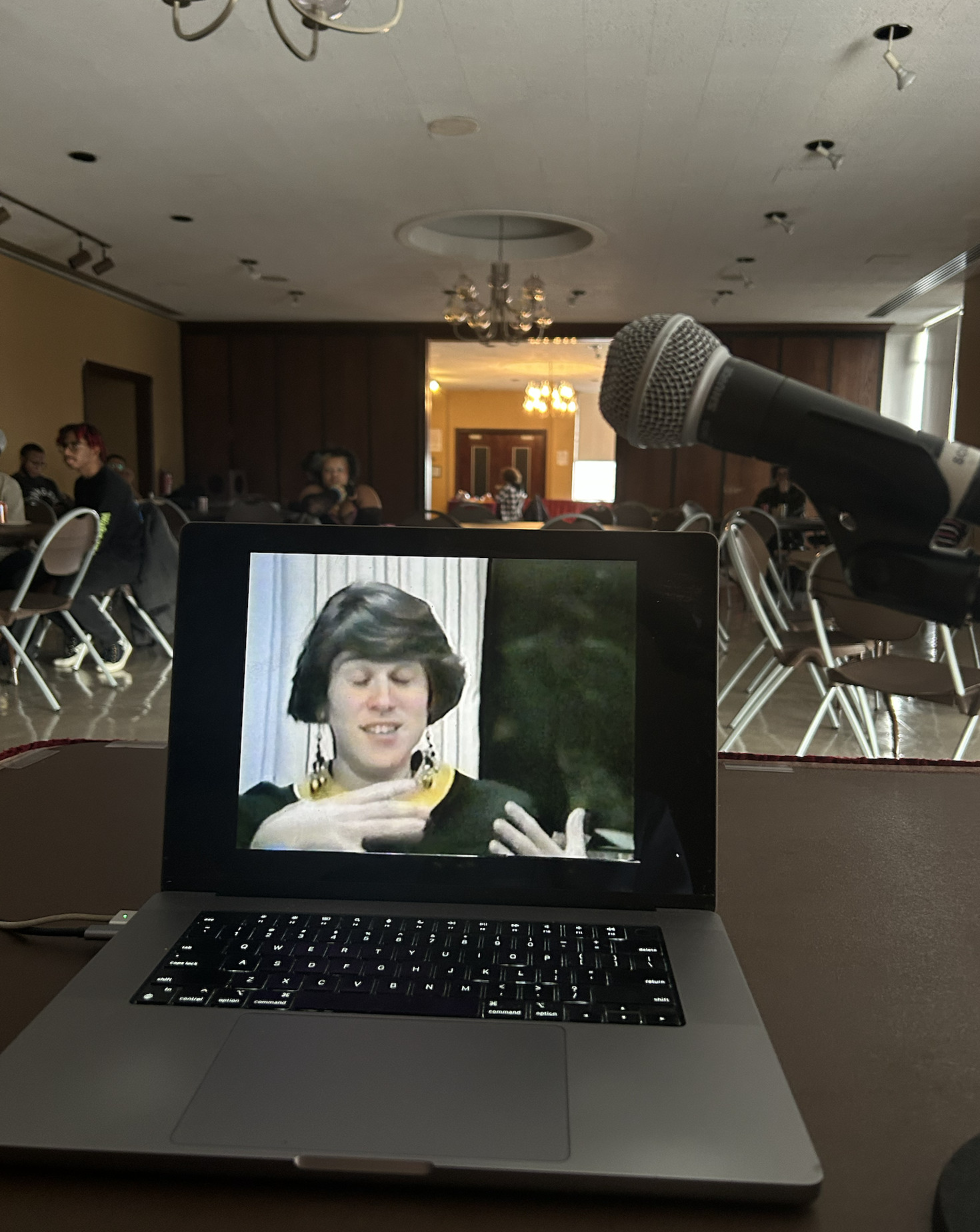
To put these simple but mighty frameworks into perspective, let me conclude with some reflections on the audience I had joined the previous evening.
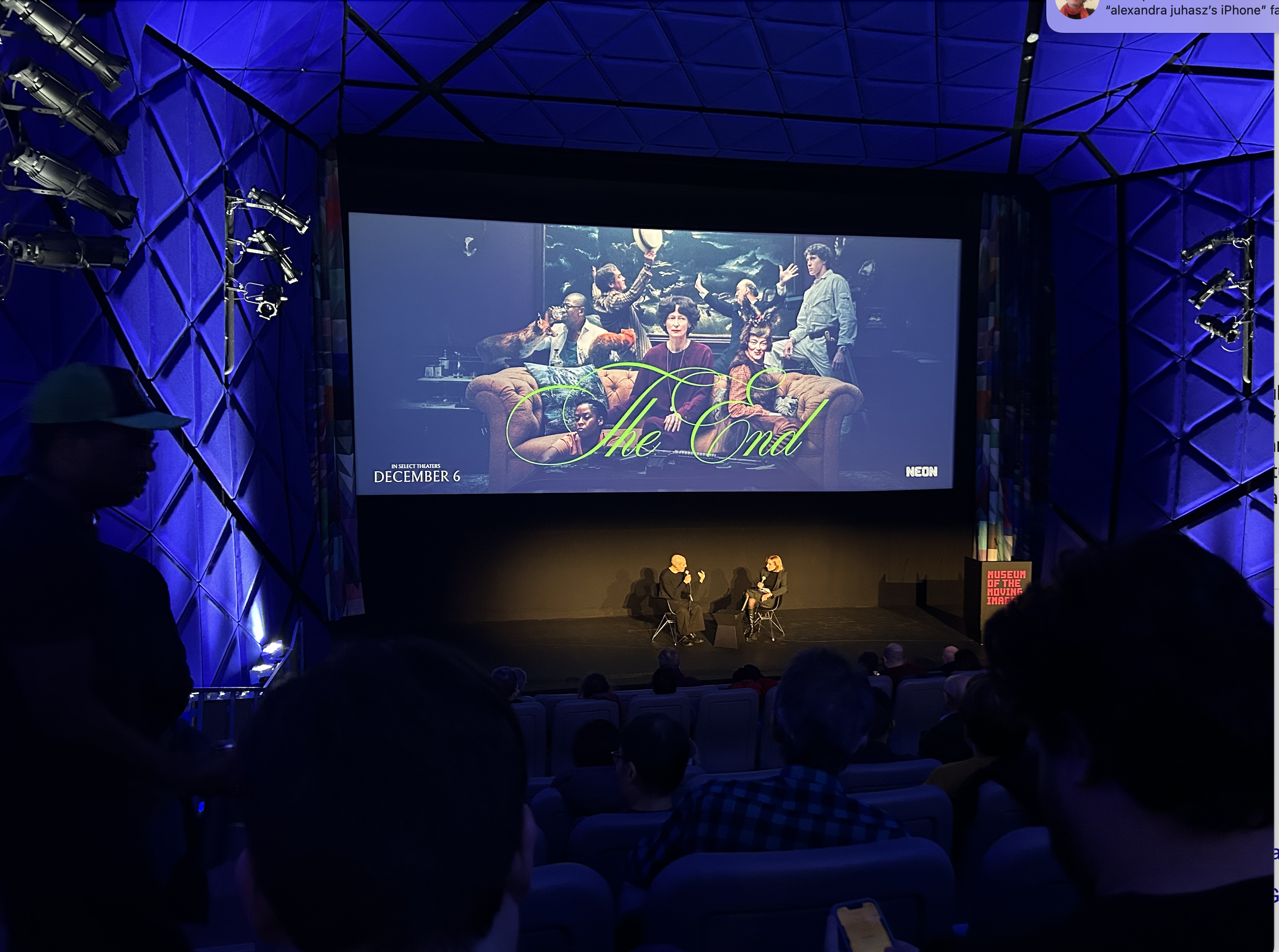
On a cold night, I took a long subway ride to the Museum of the Moving Image (a critical cultural bulwark), to be in the audience of an advance screening of Josh Oppenheimer’s first fiction film, The End. It was free and the artist was going to be present. I wanted to be in this audience, and I’m glad that I was. During the Q and A, Oppenheimer noted that the beautiful, cavernous, blue walls of this state-of-the-art theater felt a bit like the bunker and surrounding ice caves where his film’s privileged family lives for 20 years in ruinous if opulent isolation from a destroyed world.
Let me be clear, my following remarks about the affordances of being in this audience are in no way critical of the film, the director, the venue, or this crowd. Quite the opposite. As I said, I am glad I made the trip. I learned things about the film otherwise harder to get to without having heard from the filmmaker; and watching this tale of isolation and suffering buttressed by other live bodies added to its weight. Also, not too long ago, The Watermelon Woman (dir: Cheryl Dunye, 1996), a film that I produced, enjoyed a distinct honor of being celebrated in this same space as a Cinema Eye Legacy film. It’s a moving experience to be in a dark, lush room with others also drawn to be there in a community of spectators, fans, or celebrants.
We become an audience of art work in grand spaces for any number of reasons that deeply feed us. We go there to be informed, moved, receptive, impressed, taken over, passive, awed, celebratory, stimulated, or overcome. We join others with shared taste, and sometimes social or political commitments. The apparatus (lights, mics, chairs, proscenium, stadium seating) maintains our positions, which can feel clarifying. As does the Q and A, where q’s come from unnamed and usually poorly heard corners of the room, whereas a’s are authored, clear, and centered. We might go out for a drink after.
My thoughts on Day With (out) Art and The End, which was full of it, are a matter of audience affordances not evaluations. We are going to need it all, come January 2025: impressive art, celebrations of historical firsts, words of experts, places where we listen and feel, as well as the most mundane spaces where community means sharing vulnerability, history, power, quiet, and pizza.
So maybe, given how I am in the process of learning that audiences, online and off, are feeding and can be fed in many and diverse ways, my question might be better put as: what don’t we need, or maybe, what isn’t an audience, at least for the interval and for four or so years for which we now prepare.
Social media is many things. It is proto-political: deliciously spreading information, connecting people, elevating reactions. Social media is a lifeline, fun, and easy. It can be hard. There is power to be gained, and feelings to be hurt.2 It is a crowd. It is an ocean. It is a silo and echo chamber. It takes many forms and impressive work happens there. And yet,
Social media is not the audience as community that I have been trying to better understand here.
While certainly there are any numbers of counter-examples, ways that my overly simplistic dictum can and should be disproved (as was true of all the negative things I raised about YouTube for so many years), my bald declaration’s function is not one of totality as much as provocation. It demands responses—nuance about the communities and audiences of social media—while raising a question:
What do we want, or better yet need of social media as the audience and community that could serve us as individuals, communities, and movements in times of serious trouble? If it’s not the ideal space to bunker down—cavernous, cold, isolated, opulent—to prepare for The End, where is?
Back to the Q and A. While Oppenheimer admits The End is bleak, he repeated, several times, that the underground set he built with others is a projection of a reality that we can avoid if we honor, right now, that we still have a sky, and family and friends and comrades to extend with into nature’s pleasures and treasures, and to struggle with to protect and keep them.
Social media contributed mightily to one unwanted end: our incoming president, one bent upon destroying much of our world. Social media will also be used to contribute to our resistance. So, I am not so much suggesting leaving these platforms, or not continuing to learn from or connect with Instagram, or Facebook, or Bluesky (the social media where I am sharing this post) but rather augmenting their best affordances with a range of human practices, pedagogies, and political pastimes primarily organized toward different ends: steering away from capital, accumulation, destruction, ease, plentitude, and volume and instead putting a focus on staying power, how human attention, commitment, and care can intensify in environs built for sharing resources. The interval between election and inauguration is not an or the end. It is a quiet and scary time in which to account for what we have, as well as what humans have done and can do.
I read these many words (two days in the making) again and again before hitting “publish,” only then to share on more current platforms, and I think, all I’m saying—writing here in long form on a dated format—is: go to a queer club or a lecture on Black film history; take a feminist class or go to an art film or museum. Remember and honor people who have been lost to AIDS, and those who have organized and made change because of this and other indignities. Being in the audience as community: that’s no strategy for safety or resistance; that’s already what most anyone who’s reading this already does (and look where that got us!); that’s only a richer and slightly more connected way to live in a constricting and violent world.
- My work with the FemTechNet collective comes to mind, as does Agosto Boal who was named by one of the students responding to a tape I screened, Safer and Sexier: A College Student’s Guide to Safer Sex, a community-based AIDS video I worked on at Swarthmore College in the 1990s now available to screen online with 200 other so titles on my soon to be released VHS Activism Archive. ↩︎
- The formative dread of one’s “audience’s” reactions is wired into the ever-developing space of social media. When I used to blog, I thought of my “audience” as friends and colleagues. ↩︎
Comments
2 responses to “Audience as community (2): World AIDS Day@Brooklyn College”
[…] I have been writing and thinking about and being in audiences in this period, and this has often brought me to the role of food. And here you are having created a luscious body of theoretical and practical media work on the […]
[…] gracefully and graciously agreed, to be interviewed for my dreaded blog, which Visual AIDS (VA) has been on so many times in the last few weeks, as have you personally as […]